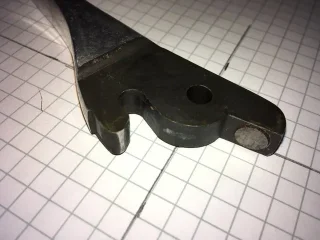- Joined
- Oct 11, 2015
- Messages
- 95
I am having trouble bleeding my front brake. I have the 1/2” master cylinder sold by madass 140, like this http://www.tritonmotorcycleparts.com/297620485/product/515646/norton-brakes?catid=146825. I have rebuilt my caliper with stainless pistons and used a new stainless line. I have traditional bled, vacuum bled a ridiculous amount of times, gravity bled, reverse bled,and ziptied the lever down with the master at the highest level a couple of times. The ziptie trick seems to work for a bit, but goes back to bad shortly after. I dont have any visible leaks, and I teflon taped the bleeder valve threads(only the threads) for the last round of bleeding. The lever still comes too close to the handlebar. The new restore is ready for a road test and the weather is warming, so I am anxious to figure this out. I have never had this much trouble bleeding brakes. Anyone else have this problem? Thanks.

